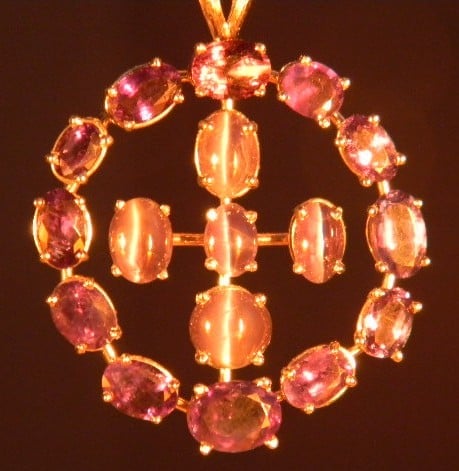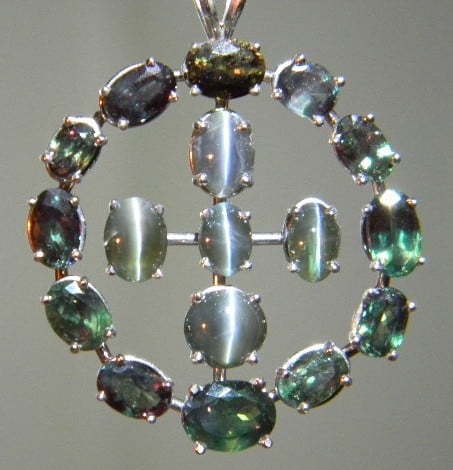When showing my alexandrite pendent using daylight or candlelight I get good results with color change, when I use a shortwave UV light I get a slight reddish tone with a little green in the mix. Is this normal for this type of material?
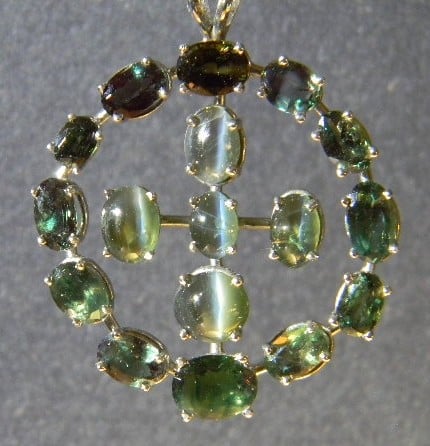

When showing my alexandrite pendent using daylight or candlelight I get good results with color change, when I use a shortwave UV light I get a slight reddish tone with a little green in the mix. Is this normal for this type of material?


Hi Steve ,
In my limited experience I know Alexandrite changes in sunlight, pretty cool in the UV lighting!!! Great pendant by the way , you have created a lovely piece. Hard to find such pendants, especially with Alexandrite in Canada 
Alexandrite can exhibit up to moderate fluorescence in UV short and long wave light with a red color. Absence of fluorescence does not rule out alexandrite as it can be inert.
John
how old is this piece? In the last few decade or so they have successfully simulated Alexandrite, it tends to fluoresce more strongly then natural stones. There was a lot of Alexandrite around in the 50s and 60s particularly in costume jewelry as it was cheap then but attractive. If the jewelry is from this era there is a good chance the stones are natural. Keep in mind no one test alone is enough to identify a natural stone, I advise looking for inclusions under a microscope or 25x loop as another way to identify if they are natural or Lab created.
gemsofoz, the peice is about 2 yrs old, the stones were cut within the last fifteen yrs my guess. Top stone was removed & lab tested, alexandrite from Sri Lanka, 70%-80% color chg, very good color change. The pendent has been apprsed. at least 5 times over the years & final appr. is in the 6 digit range. the stones are from Russia, India, Ceylon, & Brazil. The picture was shot using candlelight then a flourescent light to asimilate daylight or close to it. Under UV light I get a slight red color using short wave uv, hence my question about uv lighting, the stones are all natural & untreated in 14kt white gold, one more thing, lab alexandrite has almost no green color under daylight conditions, the new synthetic now shows a little green under daylight with todays new material, so buyer beware as with most colored stones-still learning-m76steve…
I forgot to mention, no UV lighting was used in the above pictures-m76steve…
awesome piece to have, would be worth more now too as the price of Alexandrite is forever increasing.
I have a difficult time photographing Alexandrite also. I know that Wayne Emery has a great photo system for hard to shoot gems. He carries a fine line of photography equipment that is very helpful to jewelers. Everyone knows that a picture is critical when selling gems online.
Here is the link to his site
www.JewelryPhotoSolutions.com
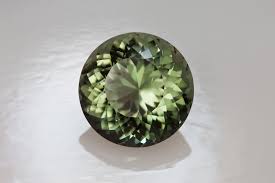
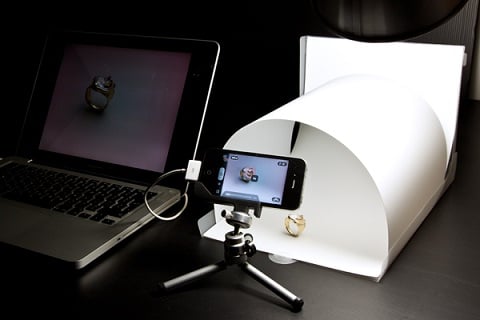
have u seen the Russian material?
ladychaplin, Ive seen alexandrite from Russia, India, Brazil, Sri Lanka, & a few other locations. The stones in my pendant are from Russia, India, & Brazil. This info was supplied at sale of each stone in the item, the info was not verified but the material was verified as natural, untreated alexandrite. The color change effect is as should be, green to red or as close to the ideal as possible. The stuff in the pendant is pretty good overall & the appraisals prove this-m76steve…
This is an old post but a good uppost, Im showing pictures of the pendent in daylight then under UV light, the pic under UV is 1 example of showing what a good alex will do under this light source, the top stone glows darker because of a possible higher Fe, iron, content, similar to burmese ruby & burmese red spinel, low iron content gives these stones a bright reddish color that the stones are known for-steve…
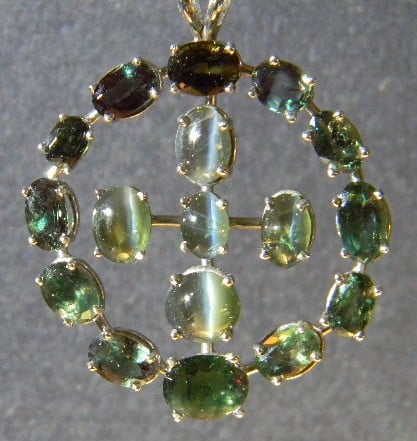

This is a pendent update on pictures, re-aligning of stones & framework to the piece as it is today, Feb, 2015. The catseye stones are more in-line & overall pendent has a more finished look-the pics are daylight, 2 candle, lighted in dark room, & the back of the pendent-steve…

